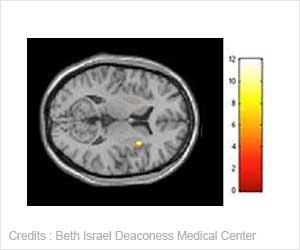Two regions in the mid-brain play specific roles in controlling the start, speed and context dependent selection of walking.
Speed and gait selection may be controlled by two distinct mid-brain nuclei, finds a new study. The walking function controlled by glutamatergic excitatory neurons (GlutNs) might be segregated in between cuneiform nucleus (CnF) and the pedunculopontine nucleus (PPN). The findings of the study are further discussed in the journal
Nature.
The researchers Vittorio Caggiano, Roberto Leiras, Haizea Goñi-Erro and professor Ole Kiehn show that two regions in the midbrain play specific roles in controlling the start, speed and context dependent selection of locomotion in mice. They are called the Cuneiform Nucleus or CnF and the pedunculopontine nucleus or PPN.
TOP INSIGHT
Cuneiform (CnF) and pedunculopontine nucleus (PPN) containing glutamatergic excitatory neurons, may be responsible for speed and context dependent selection of walking. However, CnF can elicit the high-speed running, whereas PPN neurons may favor slow walking.
"We find that neurons in both PPN and CnF can start locomotion and that activity in these areas contribute to the maintenance and speed regulation of slower locomotion. However, only CnF is able to elicit the high-speed escape locomotor activity. In contrast, activity in PPN neurons favors slow explorative locomotion," says Professor Ole Kiehn Department of Neuroscience, UCPH.
While the precise coordination of locomotor movements is controlled by neuronal circuits in the spinal cord, the episodic control of locomotion is attributed to descending signals from the brainstem that activate neuronal circuits in the spinal cord.
The midbrain circuits are complex and contain neurons of many different types although the main players are shown to be the so-called glutamatergic neurons.
The researchers have utilised a number of advanced techniques, including optogenetics, to study which types of neurons are involved and the location of the neural networks. By using light and designer drugs, they have been able to activate or inactivate selected groups of nerve cells and then study how this affects the locomotor output in mice.
The researchers identify populations of 'start neurons' and show, for the first time, how the two regions in the midbrain can act both in common or separately to control speed and to select context dependent locomotor behaviours.
"By identifying the midbrain 'start' neurons we complement a previous study where we found 'stop cells' in the brainstem that halt locomotion. Together, the start and stop cells define the episodic nature of locomotion," says Ole Kiehn.
The study breaks new grounds in locomotor control and is important for understanding the normal brain function in mice. And the authors believe that the results might benefit humans with disabled locomotion as well.
"In Parkinson's disease which affect the basal ganglia - one of the main source of inputs to the PPN - gait disturbances and freezing of gait are very pronounced. By implanting fine electrodes in the brain - a technique called deep brain stimulation which is already used to treat some symptoms in Parkinson's disease - circuits in either CnF or PPN might now be targeted with new precision and used to increase the locomotor capabilities. Similar approaches may also be attempted after damage to the spinal cord, where initiation of locomotion is strongly affected," says Ole Kiehn.
Source-Eurekalert

 MEDINDIA
MEDINDIA




 Email
Email








